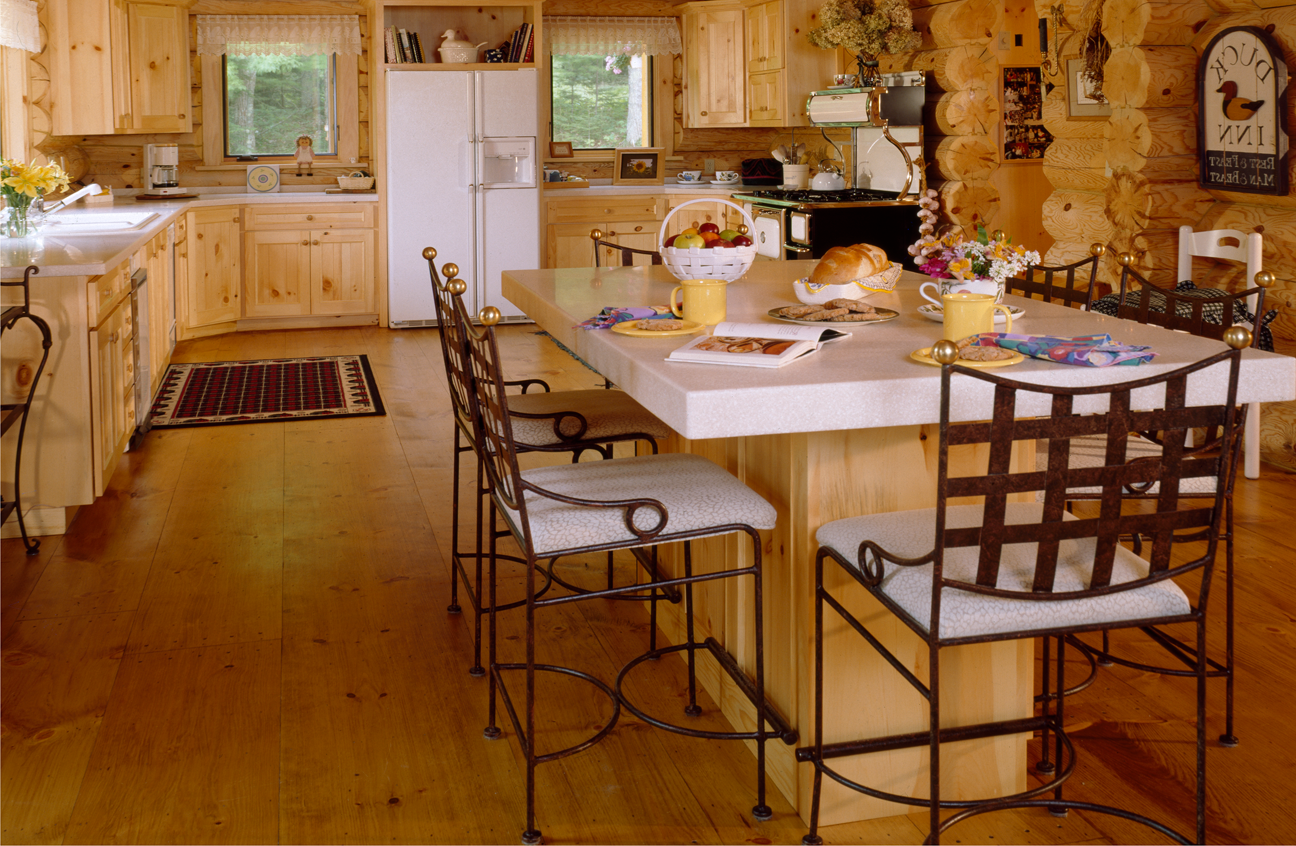
Old Growth White Pine represents the finest examples of Eastern White Pine lumber, sourced from trees that grew for 200-400 years in the virgin forests of northeastern North America. These magnificent trees, some reaching heights of 200 feet and diameters of 6 feet or more, were the foundation of early American construction and were so valued that the British Crown reserved the finest specimens for ship masts with the “Broad Arrow” policy. Today, true old-growth White Pine is extremely rare and precious.
The wood displays the classic White Pine characteristics but in their most refined form. The heartwood is pale yellow to cream-colored, with virtually no color distinction from the sapwood. The grain is exceptionally straight and fine, with growth rings so tight and even they create an almost silky smooth texture. The wood has a subtle natural luster and the pleasant, mild pine scent that White Pine is known for, though this is often more pronounced in old-growth material due to its higher resin content.
The most remarkable aspect of Old Growth White Pine is its incredible stability and workability. The centuries of slow, steady growth produced lumber that is virtually free from defects, with minimal tendency to warp, twist, or check. The wood is soft and lightweight, making it exceptionally easy to work with both hand and machine tools. It cuts cleanly, holds fine detail beautifully, and rarely tears out even when working across the grain.
The tight, even grain structure of old-growth material makes it superior to modern White Pine for applications requiring stability and smooth finishes. The wood takes paints and stains exceptionally well, with the fine grain providing an ideal surface for high-quality finishes. Clear finishes highlight the subtle beauty of the grain while protecting the wood’s natural pale color.
Six Most Important Features of Old Growth White Pine:
Unmatched Workability – This wood is exceptionally easy to cut, shape, and finish with both hand and power tools, making it ideal for detailed millwork.
Superior Stability – Centuries of slow growth eliminate defects and movement tendencies, creating lumber that remains true under all conditions.
Incredibly Fine Grain – Tight, even growth rings create a silk-smooth texture that provides the perfect foundation for high-quality finishes.
Historical Significance – Known as the “King of Pines,” this wood built early America and carries immense cultural and architectural importance.
Ideal Finishing Base – The fine grain provides a perfect surface for paints, stains, and clear finishes, resulting in superior aesthetic results.
Extreme Rarity – True old-growth specimens are virtually irreplaceable, making each piece a precious link to America’s forest heritage.